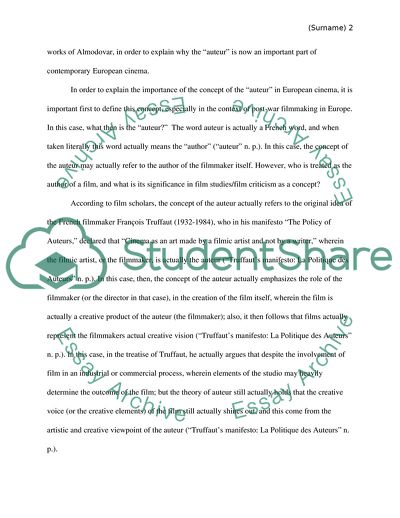Cite this document
(The Concept of the Auteur in the Context of Post-War European Cinema Essay, n.d.)
The Concept of the Auteur in the Context of Post-War European Cinema Essay. https://studentshare.org/visual-arts-film-studies/1749261-how-useful-is-the-concept-of-the-auteur-in-the-context-of-post-war-european-cinema-in-answering-the-question-you-should-make-detailed-reference-to-the-work-of-pedrom-almodovar
The Concept of the Auteur in the Context of Post-War European Cinema Essay. https://studentshare.org/visual-arts-film-studies/1749261-how-useful-is-the-concept-of-the-auteur-in-the-context-of-post-war-european-cinema-in-answering-the-question-you-should-make-detailed-reference-to-the-work-of-pedrom-almodovar
(The Concept of the Auteur in the Context of Post-War European Cinema Essay)
The Concept of the Auteur in the Context of Post-War European Cinema Essay. https://studentshare.org/visual-arts-film-studies/1749261-how-useful-is-the-concept-of-the-auteur-in-the-context-of-post-war-european-cinema-in-answering-the-question-you-should-make-detailed-reference-to-the-work-of-pedrom-almodovar.
The Concept of the Auteur in the Context of Post-War European Cinema Essay. https://studentshare.org/visual-arts-film-studies/1749261-how-useful-is-the-concept-of-the-auteur-in-the-context-of-post-war-european-cinema-in-answering-the-question-you-should-make-detailed-reference-to-the-work-of-pedrom-almodovar.
“The Concept of the Auteur in the Context of Post-War European Cinema Essay”. https://studentshare.org/visual-arts-film-studies/1749261-how-useful-is-the-concept-of-the-auteur-in-the-context-of-post-war-european-cinema-in-answering-the-question-you-should-make-detailed-reference-to-the-work-of-pedrom-almodovar.


